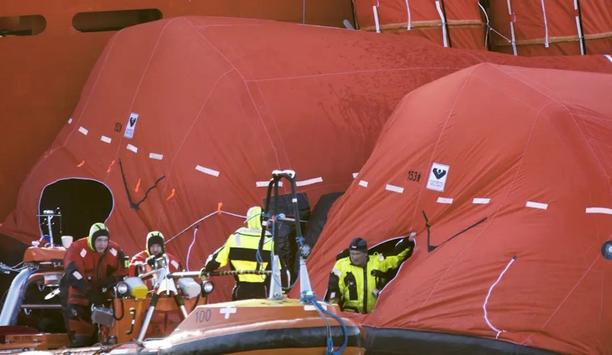RightShip, the digital maritime platform providing expertise in safety, sustainability, and social responsibility practices announced a change in its vessel inspection age trigger.
Vessel inspection
In response to evolving market conditions and continuing safety risks in the Dry Bulk and General Cargo sectors, RightShip will implement a phased approach to require inspections of vessels at an earlier age.
This change reflects the organisation’s continued commitment to improving safety standards, reducing incidents, and promoting sustainable maritime operations, and builds on consistent customer feedback calling for vessel inspections to identify risks and propose mitigation actions.
A two-phased approach to enhanced safety
The phased introduction of this new policy will begin on 31 March 2025:
- Phase 1 (2025): RightShip’s age trigger for inspection of Dry Bulk and General Cargo vessels will change from 14 years to 12 years, after which an annual acceptable RightShip Inspection will be required.
- Phase 2 (2026): The age threshold will be further reduced, requiring inspections for vessels aged 10 years or older.
Additionally, RightShip will require vessels with less than 8,000 DWT to undergo similar inspection making the safety standard more consistent across the global Dry Bulk and General Cargo fleet.
Operational excellence
"Our decision to lower the inspection age from 14 to 10 years, in a phased approach, reflects the desire from stakeholders for more physical inspections of vessels to counter challenges the dry sector faces in achieving operational excellence," explained Christopher Saunders, Chief Maritime Officer at RightShip.
He adds, "This change reflects our commitment to raising safety standards globally and comes at a critical time as the global dry bulk fleet now averages 14.7 years in age and will continue to rise."
Risks with aging vessels
The update is driven by clear evidence of risks with aging vessels and is informed by extensive industry dialogue
Christopher Saunders continues, "Data shows there is a strong correlation between performance in a RightShip Inspection and the risk of detentions and incidents."
This update is driven by clear evidence of risks with aging vessels and is informed by extensive industry dialogue over the last 12 months.
Addressing key safety risks
RightShip data reveals that the Dry Bulk sector lags in critical safety metrics compared to other sectors, with bulk carriers experiencing the highest incident ratio at 1.49%, followed by oil (0.96) and LNG (0.89%) Fatalities are significantly more prevalent in Dry Bulk, showing a 0.42% fatality ratio, surpassing LNG and LPG vessels (0.14%).
Additionally, bulk carriers have a Port State Control detention ratio of 4.69%, which is four times higher than that of oil tankers, highlighting the significant safety concerns associated with bulk carrier operations.
Analysis of vessel size and age
The RightShip analysis of vessel size and age indicates a strong correlation between the age of bulk carriers and increased safety risks, particularly after vessels exceed 10 years.
Larger vessels (over 200,000 DWT) see a notable rise in incident and detention ratios as they age, especially between 10-13 years. This trend is also evident in smaller vessels, where incident and detention ratios peak at 14-19 years.
Need for proactive safety interventions
The pattern mirrors the challenges faced by general cargo vessels, highlighting the broader issue of aging fleets
Moreover, deficiencies per inspection increase with vessel age across all categories, emphasising the need for proactive safety interventions well before the 14-year mark to support owners and managers in mitigating risks, inform chartering decisions, and enhance operational efficiency.
This pattern mirrors the challenges faced by general cargo vessels, highlighting the broader issue of aging fleets in maritime safety.
Stronger safety measures
"At RightShip, our commitment to safety and crew welfare is evident in our proactive standard-setting and advocacy for stronger safety measures," said Steen Lund, CEO of RightShip.
He added, "The data and insights gathered from our inspections are crucial in enhancing the vetting process, providing charterers with a clearer understanding of a vessel's condition and performance and supporting ship owners and managers in their efforts to enhance safety across their fleets."
Transparency in the maritime ecosystem
Steen Lund continues, "As we navigate the challenges associated with an aging fleet, we must collectively strive for safety and transparency across the shipping industry. It is incumbent upon the entire maritime ecosystem to embrace and champion improved safety standards."
He concludes, "This commitment is part of our broader mission to drive continuous improvement toward zero harm in maritime operations."












